| Your browser is not supported. | ||
|
Please browse our site using any of the following options:
| ||
How to choose the right clothing for Camping & Hiking?
Wearing the right clothes when you're camping or hiking can be the difference between good times and utter misery. It's no fun feeling cold and wet, or overheating because you're in the wrong gear. This Buying Guide walks you through what to wear when you're camping or hiking, helping you stay warm and dry in winter, and cool in hot Australia n summers.
What's the best hiking and camping clothing?
When you're trying to work out what to wear camping or hiking, remember, what's best for one person might not suit another.
Choosing what to wear camping or hiking depends on your unique needs:
- The conditions you expect to face now and in future (rain, snow and temperatures)
- How much you feel the cold in general (if you're always cold go for the warmest gear)
- How often you'll be going camping or hiking (once every year or two, or on most weekends?)
- How active your adventures will be (will you be casually strolling or hiking for hours or days?)
- How long you want your clothing to last (for a few hiking or camping trips, or years to come?)
What are good hiking pants? What is the best lightweight jacket for hiking?
Working out which clothing you should buy is easier when you break it down into these five steps:
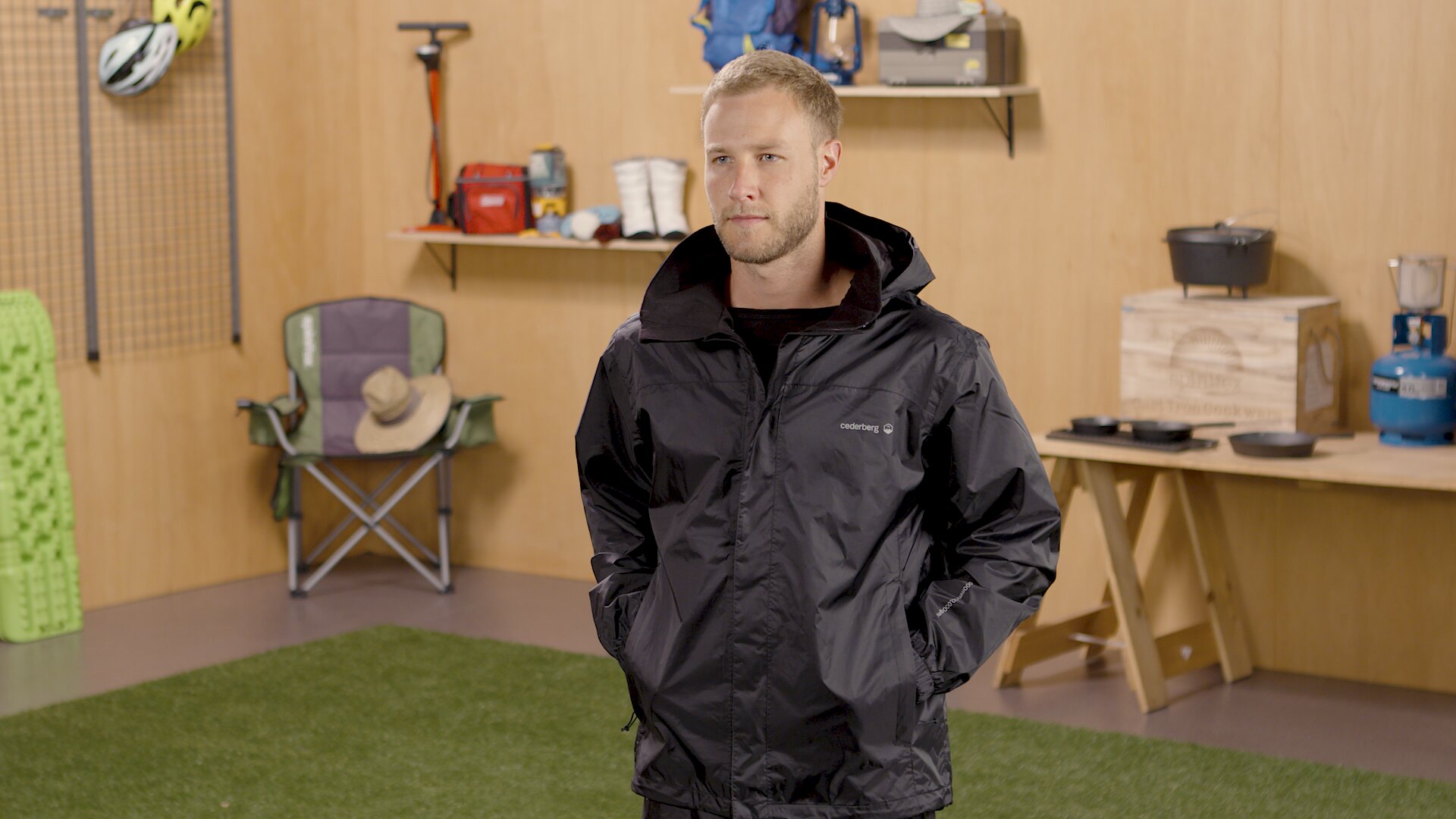
1. Wear Layers
Wearing layers is the key to staying comfortable when you're camping or hiking, and each layer serves a different and important purpose.
How do you layer clothing for hiking?
First, put on a base layer (usually called thermals). This layer sits right next to your skin and:
- Draws (or wicks) sweat and moisture away from your body so your skin stays dry.
- Stops body moisture making you feel cold and stops body heat escaping via sweat.
- Keeps your body temperature comfortable in mild and ultra-cold conditions.
- Ensures you're cosy and warm on cold camping trips, and stops hiking chill creeping in.
- Also helps prevent excess moisture causing uncomfortable skin chafing and painful blisters.
For guidance on how to choose the best base layer, go to the Base Layer Buying Guide.
Second, wear a middle insulation layer:
- Like your home's insulation, your insulation layer's job is to keep you warm.
- It traps body heat that gets past your thermals and stops it escaping so it warms you up.
- This insulation layer could be a fleece, jumper, vest or pair of tights.
- It goes on after you've put on your thermals, but before your water-resistant jacket/pants.
For help choosing the best middle layer and insulation clothing, go to the Jackets & Outerwear Clothing Buying Guide.
Finally, put on an outer layer:
- It protects you from the elements-wind, rain and snow-and from getting wet and cold.
- This is the final frontier to ensure you stay dry and warm and don't wind up miserable.
- Some jackets and pants are all-in-one waterproof and middle layers for lighter trekking.
- When you see higher ratings on jackets it means they're more waterproof and breathable.
- For clothing to be 100% waterproof it must have sealed seams and waterproof
- For help choosing the best outer layer, go to the .
You can choose wear all three of these layers at once or any layer combination, taking off a layer or two as the weather warms up or you're more active, and putting them back on again if it gets cold or you're standing still.
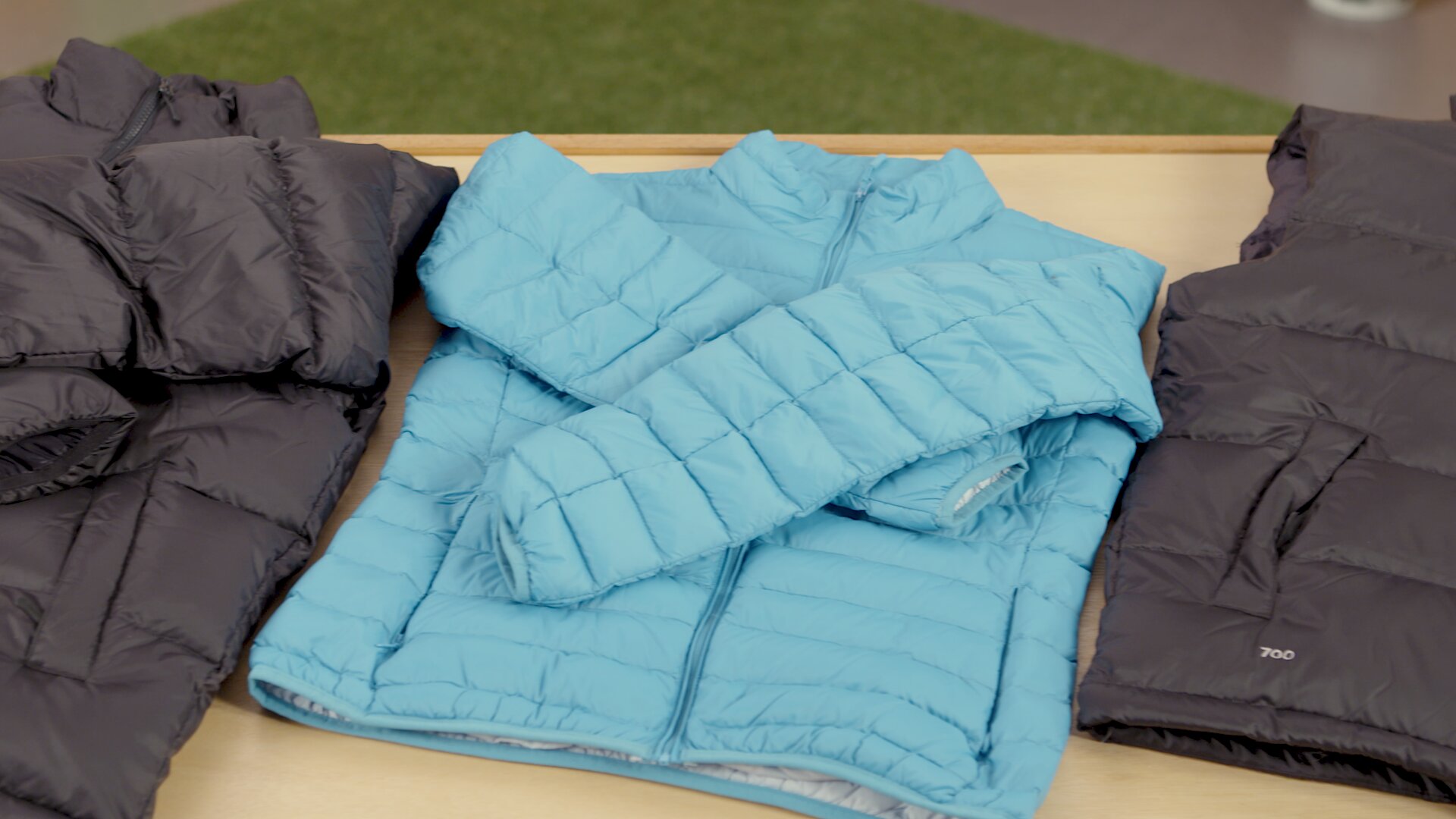
2. Dress for the Weather
The thickness of your thermals, how much warmth your insulation layer provides, and your outer layer jacket and pants all need to suit the weather you'll encounter.
Cold Weather
If you're camping or hiking in cold weather:
- Long, heavy thermals keep the full length or your arms and legs warm.
- Snow pants will protect you from the snow and wind and keep you warm.
- For help choosing snow clothing, go to the Snow Clothing Buying Guide.
Warm or Mild Weather
If the weather you'll be camping or hiking in will be warm or only mildly cold:
- Short, light thermals will keep your core dry without making you too hot.
- If it's hot and windy, consider short-sleeved thermals, a thin jacket to protect you from wind burn, and pants with zip-off bottoms that convert into shorts.
- What is the best jacket for warmer weather? If there's only a chance of a light shower you could wear:
- A soft shell jacket that's lightweight, wind-proof and water-repellent (not waterproof).
- Soft shell pants in a durable, stretchy, water-repellent (not waterproof) material.
Wet Weather
If you know there'll be rain or snow, make sure your jacket is 100% waterproof with:
- Sealed seams - so water can't seep in through seam holes used to stitch clothes together.
- Waterproof zips - look for zips covered with a fabric flap so water can't get in via the zips.
- Hood brims or ties - to tighten or loosen the hood so it fits snugly and protects your head.
- For help choosing the best outer layer, go to the Waterproof & Rainwear Buying Guide.
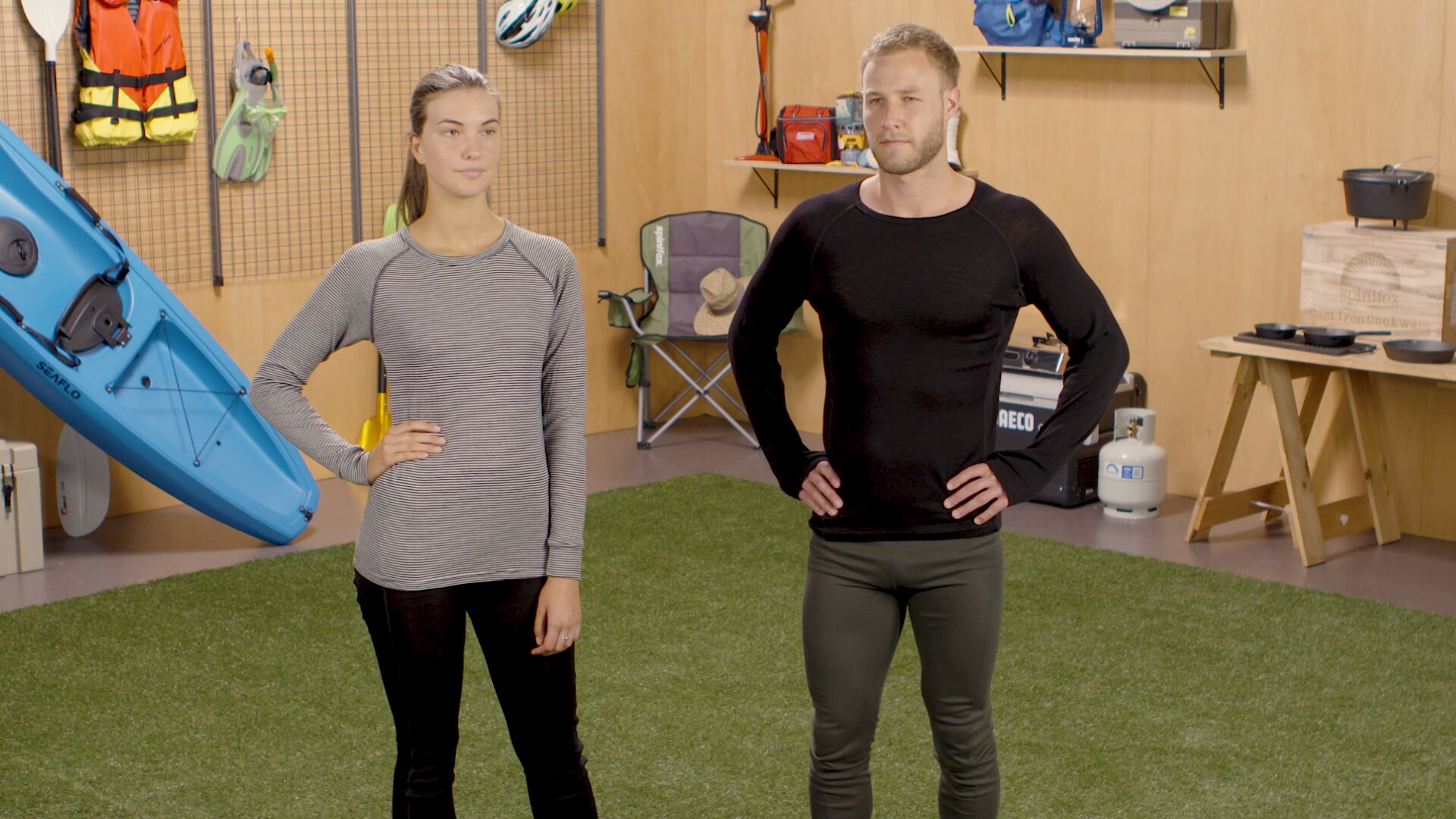
3. Clothing Fabrics
The fabric your clothes are made from determines how warm, dry and comfortable they'll keep you while camping or hiking. Fabrics can be natural, synthetic or a natural-synthetic mix, and different fabrics have different benefits. Let's look at the fabric options and benefits of each to help make choosing your layers easier.
Base Layer
When it comes to the fabrics thermals are made from:
- Synthetic fabrics like polyester or polypropylene keep you really warm and dry fast, but body odour can seep in, making them a bit smelly (an antibacterial fabric treatment helps).
- Natural merino wool is breathable and soft for a comfortable body temperature in cold and warm weather. It absorbs moisture but not odours so is great for packing light, but takes longer to dry than synthetic fabrics.
- Cotton isn't suitable because it absorbs too much moisture so you'd feel cold when hiking.
- A combination of polypro and wool gives you warmth, breathability and dryness.
- If you're wearing your thermals by themselves in warm weather, go for fabrics with a UPF50+ treatment so your skin's protected from the sun's rays.
- For more on base layer fabrics and their benefits, go to the Base Layer Buying Guide.
Middle Insulation Layer
For the middle layer which keeps you insulated and warm:
- Clothing made from lightweight synthetic fleece (or that's lined with fleece) keeps you warm even if it gets wet and dries quickly (but isn't waterproof).
- Jumpers and tights made from man-made polyester or acrylic still insulate when wet but can become a bit stinky as body odours are absorbed (an antibacterial treatment helps).
- Natural merino wool is extra fine so it's soft, lightweight and breathable, keeping you really warm and releasing moisture so you don't feel sweaty and your clothes don't smell.
- Clothing made from a combination of wool and acrylic is comfortable, warm and will last.
- Cotton holds water and is heavier but not as warm as fleece and can retain odours after washing, but it's breathable so moisture escapes, making it best for warm weather and not suitable for the snow or wet weather.
- Vests and jackets insulated with down give you the best insulation-to-weight ratio, which means they're super light and comfortable, but they won't keep you warm if they get wet.
- What is the For more information about fleece and other insulation layer fabrics, go to the Insulation Clothing Buying Guide.
Outer Layer
When you're camping or hiking, the last layer you put on protects you from wind, rain and snow so you stay warm, dry and happy.
- Waterproof and water-resistant clothing is not all equal - some keep you drier than others.
- Want to know what hiking pants are , and what is the ? The higher the clothes' hydrostatic rating the longer you stay dry while wearing it.
- Clothes with a 2,000mm hydrostatic rating give you about 2 hours of rain/dry snow protection, whereas clothes with a 20,000mm+ hydrostatic rating keep you dry all day.
- Some jackets also have a Durable Water Repellent coating so rain drops roll straight off.
- If your outer layer is breathable, the moisture your skin releases has a way to escape so you don't feel sweaty and the moisture on your skin doesn't causing rubbing and chafing.
- The higher the breathability rating, the longer you can go before feeling hot and sweaty.
- Underarms and pocket ventilation mesh increases the breathability of a jacket too.
- Some clothes also have built-in insulation so they're a waterproof and middle layer in one.
- Vests and jackets filled with down are lightweight and roll into a small ball so they're great for hiking in mostly dry weather (but not wet weather as they don't insulate when wet).
- Vests and jackets with synthetic insulation inside keep you warm in wet conditions but are heavier than down so not as compact in your pack.
- For more on outer layer fabrics and benefits, go to the Waterproof & Rainwear Buying Guide.
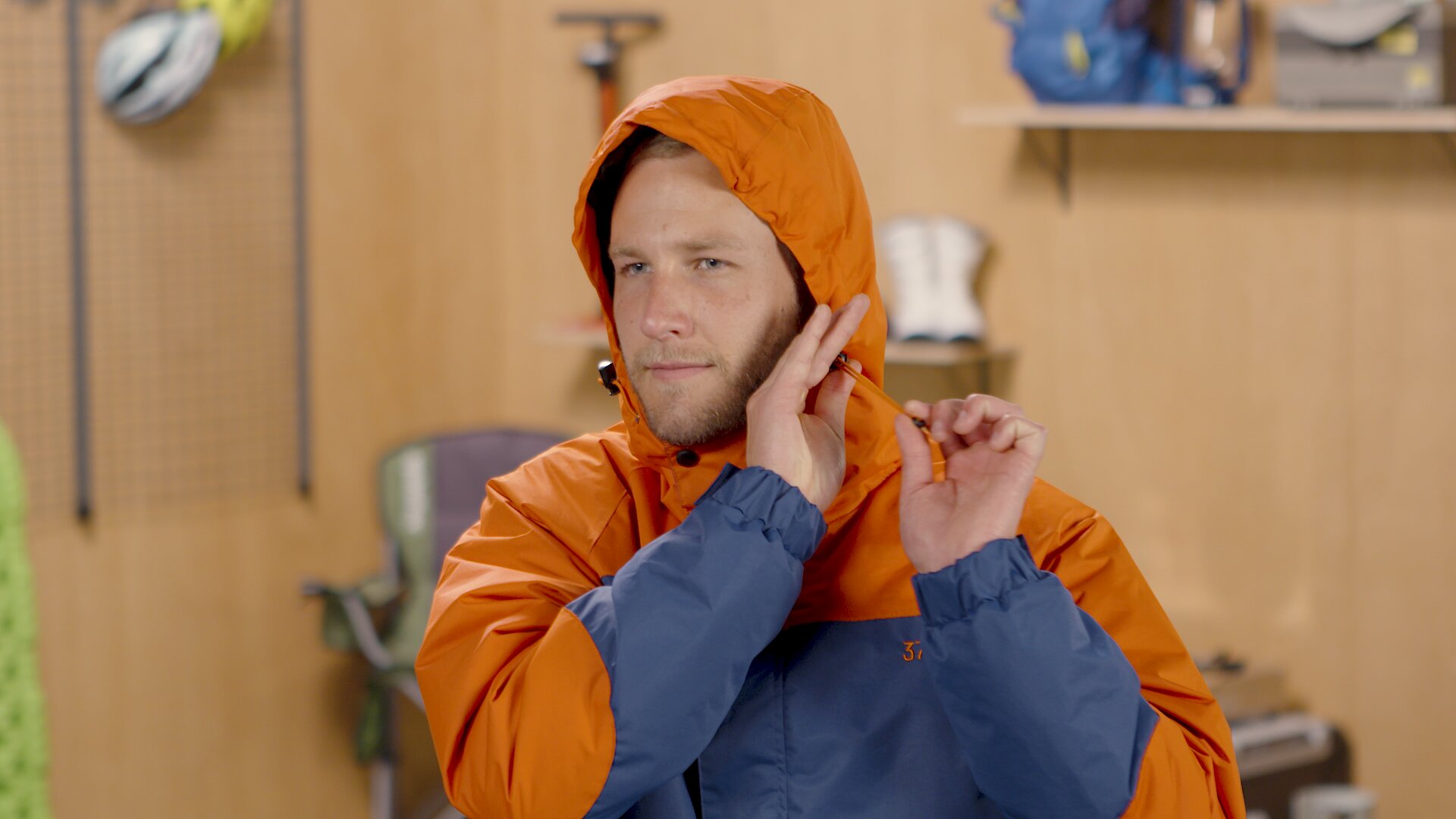
4. Hiking Footwear
Your footwear needs to suit the kind of hiking you're doing:
- Where you're hiking-in rocky or flat conditions?
- How long you're hiking for-a day, a week or longer?
- How much you're carrying-a light daypack or heavy hiking pack?
Activity Intensity
The further you're hiking and more you're carrying the more important your footwear will be:
- In the wrong shoes you can lack stability, increasing your risk of an ankle twist or sprain.
- If your boots aren't breathable they can get sweaty and rub, causing blisters and odours.
Types of Hiking Footwear
There are three types of hiking footwear:
Low Hiking Shoes
- Best for short distances and day hikes.
- Give you the most agility.
- Not suitable for carrying heavy loads.
Mid hiking boots or day-hiking boots:
- Have some ankle support to stop ankles rolling on unstable ground.
- Allow you to carry slightly heavier loads while you're wearing them.
Backpacking boots:
- Have high-rise ankle supports and a thick, sturdy mid-sole for the best
- These give you enough support to carry heavy loads so are best for longer trips.
For more help choosing the best hiking footwear, go to the Footwear Buying Guide.
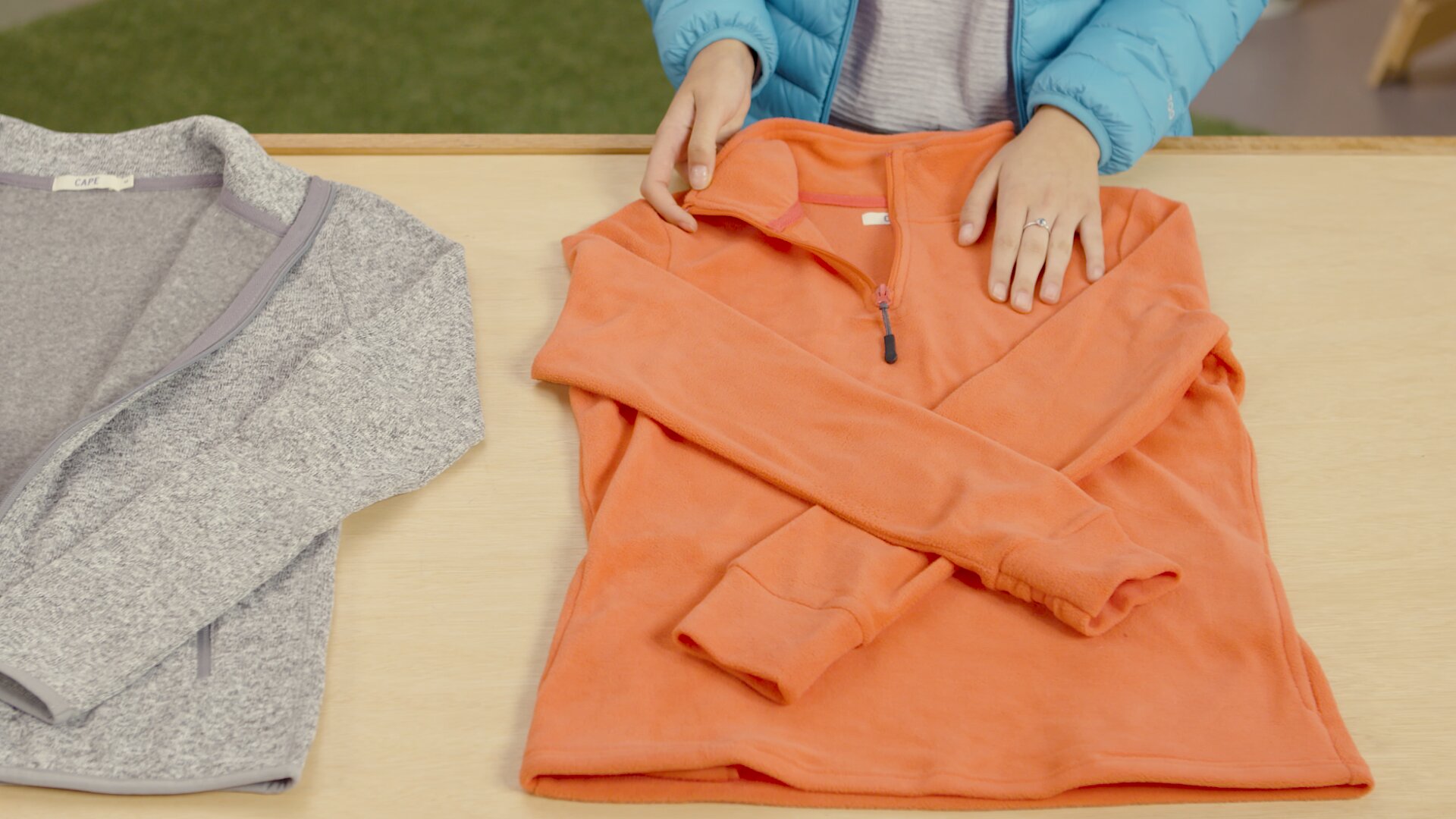
5. Quality
When weighing up which camping and hiking clothing to buy, think about quality versus cost:
- Synthetic fabrics like polypro are cheaper than natural fabrics like merino wool.
- Merino wool costs more than polypro because it's warmer, breathable and won't smell.
- Down costs more than synthetic insulation clothing as its weight-to-warmth ratio is better.
- A good quality jacket that's both an insulation and outer layer in one will last you years.
- Soft shell jackets are cheaper than hard shell jackets because they're not waterproof.
- Hard shell jackets that only have a Durable Water Repellent or polyurethane coating are cheaper than breathable membrane jackets because they lack breathability.
- Footwear that has a higher ankle support gives you more stability so is more expensive.
- Keeping the kids warm and dry will keep them happier in cold weather for longer.
How much should you spend on camping & hiking clothing?
When it comes to how much you should spend on your camping and hiking clothing:
- Think about how long you want it to last and/or how long it'll fit the kids for.
- If you won't be using your clothing often basic options should do the trick.
- Cheaper gear tend to be less waterproof so you get what you pay for.
- If you're keen to do lots of hiking and camping, it's worth investing in good quality clothing that will be comfortable and last for years to come.
When you go to the clothing section on the Anaconda menu, select men's, women's or kid's outdoor clothing from the dropdown menu. Then you'll see tick box filters down the left hand side of the page. Using these filters makes working out what to buy easier and faster because you can choose to filter what you see by:
- Price - so you only see gear that's within your price range.
- Deal - so you only see gear that's on sale.
- Water Proof - so you know what's water resistant and water proof.
- Wind Proof - so all the gear you're looking at is wind proof.
- Breathable - so you can see all the gear that's breathable.
- Size - so you can see all the gear that's in your size.
- Colour - so you only see gear in colours you like.
- Brand - so you can find specific brands like The North Face.
Come in and try on a few clothing options for size and comfort at your nearest Anaconda store.
Other Camping & Hiking Essentials
Check out Anaconda's range of Camping & Hiking products available online or visit your local store.